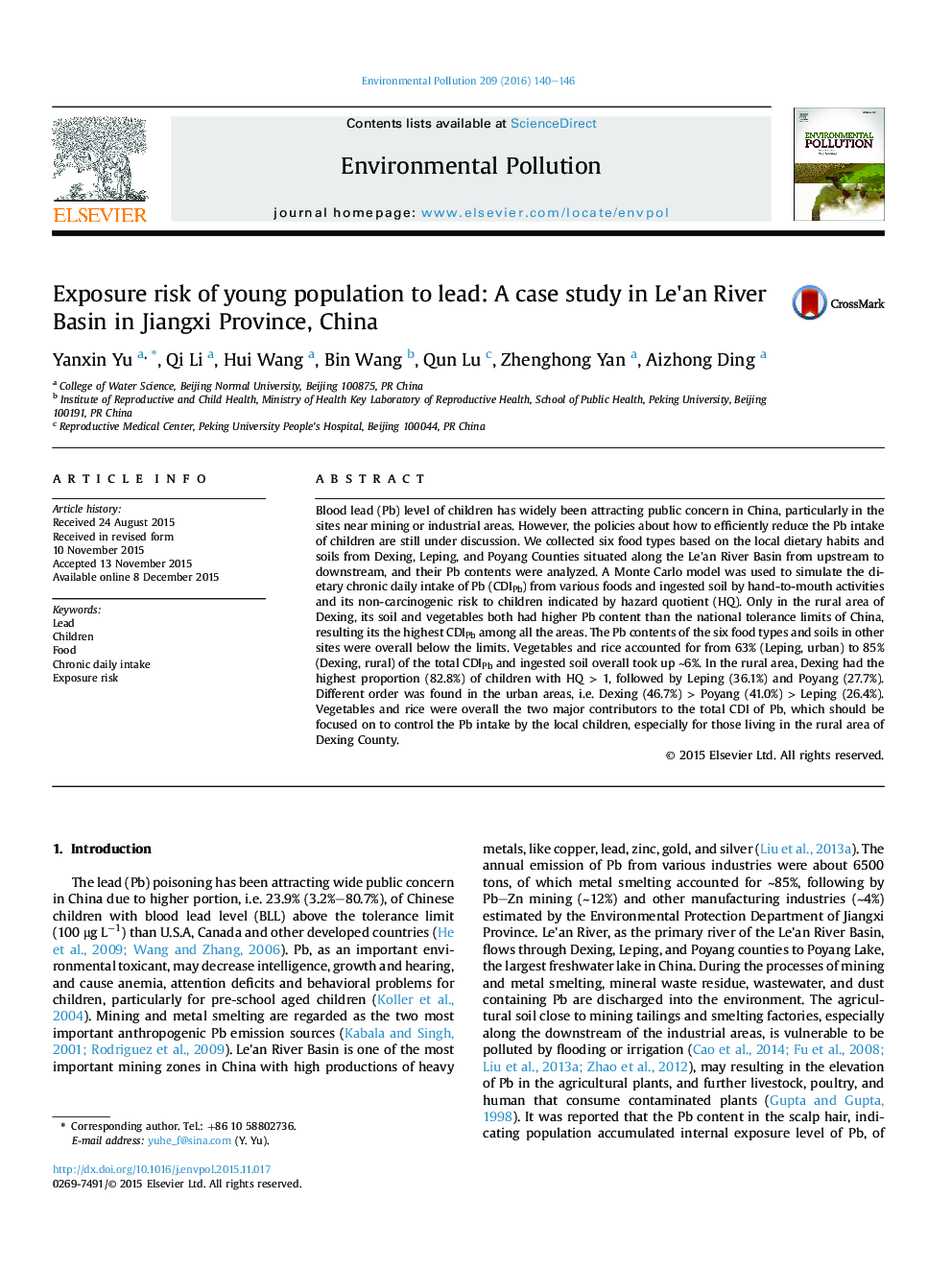| کد مقاله | کد نشریه | سال انتشار | مقاله انگلیسی | نسخه تمام متن |
|---|---|---|---|---|
| 4424273 | 1619164 | 2016 | 7 صفحه PDF | دانلود رایگان |
• Lead (Pb) contents of the local foods and soils in the Le'an River Basin were analyzed.
• The exposure risk of children to Pb was estimated by a Monte Carlo simulation.
• Ingested soil by hand-to-mouth activities took up ∼5.9% to their total chronic Pb intake.
• Vegetables and rice were the two major contributors to the total intake of Pb.
• Children in the rural area near the mining zone had higher risk than in the urban.
Blood lead (Pb) level of children has widely been attracting public concern in China, particularly in the sites near mining or industrial areas. However, the policies about how to efficiently reduce the Pb intake of children are still under discussion. We collected six food types based on the local dietary habits and soils from Dexing, Leping, and Poyang Counties situated along the Le'an River Basin from upstream to downstream, and their Pb contents were analyzed. A Monte Carlo model was used to simulate the dietary chronic daily intake of Pb (CDIPb) from various foods and ingested soil by hand-to-mouth activities and its non-carcinogenic risk to children indicated by hazard quotient (HQ). Only in the rural area of Dexing, its soil and vegetables both had higher Pb content than the national tolerance limits of China, resulting its the highest CDIPb among all the areas. The Pb contents of the six food types and soils in other sites were overall below the limits. Vegetables and rice accounted for from 63% (Leping, urban) to 85% (Dexing, rural) of the total CDIPb and ingested soil overall took up ∼6%. In the rural area, Dexing had the highest proportion (82.8%) of children with HQ > 1, followed by Leping (36.1%) and Poyang (27.7%). Different order was found in the urban areas, i.e. Dexing (46.7%) > Poyang (41.0%) > Leping (26.4%). Vegetables and rice were overall the two major contributors to the total CDI of Pb, which should be focused on to control the Pb intake by the local children, especially for those living in the rural area of Dexing County.
Figure optionsDownload as PowerPoint slide
Journal: Environmental Pollution - Volume 209, February 2016, Pages 140–146
